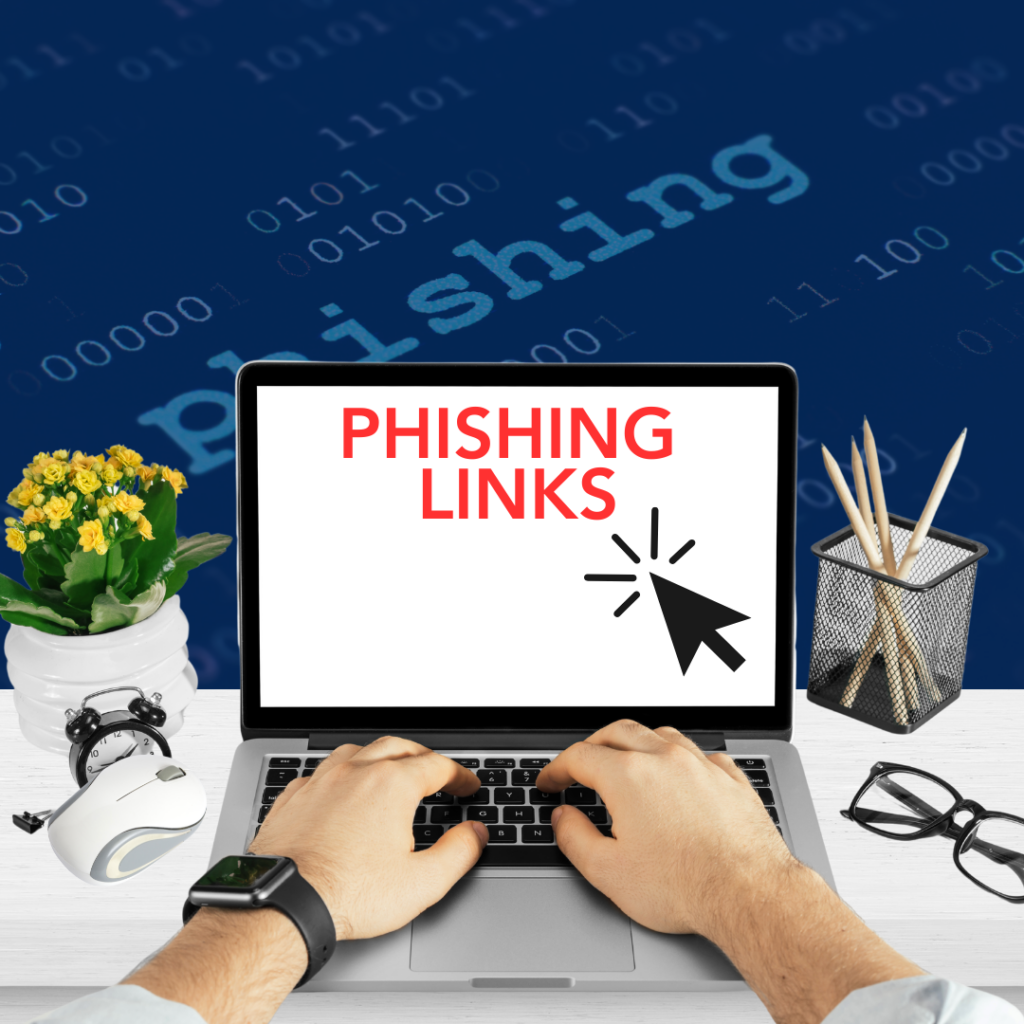Are Your Employees Being Targeted by Phishing Scams Without You Knowing?
How many phishing scams do you think your employees face every single day? 
How confident are you that they can differentiate between a legitimate email and a scam?
One wrong click costs your business.
You might be surprised — or even alarmed — to learn that the number of employees falling for phishing scams has TRIPLED over the past year. Businesses across every industry feel the impact. Some would often not realize the danger until it’s too late.
Phishing Attacks on the Rise
Let’s step back for a moment before we dig deeper into why this is happening. Phishing attacks happen when cybercriminals pose as trusted organizations. These attacks trick people into giving up sensitive information like passwords or payment details.
Imagine one of your employees receives an email that looks like it’s from Microsoft.
It asks them to log into what appears to be a familiar portal.
But the moment they enter their credentials, those details are handed straight to cybercriminals. Essentially, it will give hackers the keys to your business.
And here’s the troubling part: phishing attacks aren’t just increasing. They’re becoming harder to spot, more sophisticated, and more dangerous every day.
Notable U.S. Company Phishing Scams Incidents
Google’s Gmail Users Targeted
Google warned its 3 billion Gmail users about a sophisticated phishing attack exploiting its infrastructure in April 2025. The scam involved fake subpoenas sent from seemingly legitimate Google addresses, redirecting users to fraudulent support portals hosted on Google Sites.
These fake login pages closely mimic Google’s legitimate pages. These deceptive users show into revealing their credentials. Thus, the phishing emails passed Google’s DKIM security verification, making them appear credible.
U.S. Energy Company Targeted via QR Code Phishing Scams
A U.S. energy company was targeted by over 1,000 malicious emails, with approximately 29% containing QR codes in late 2023. These phishing campaigns used Bing redirect URLs and sometimes exploited other domains like Salesforce applications and Cloudflare’s Web3 services.
The QR codes were embedded within PNG images or PDF attachments to evade email filters and reach recipients’ inboxes.
Financial Impact of Phishing Scams
In 2024, scammers and cybercriminals stole an alarming $16.6 billion from consumers, marking a 33% increase compared to the previous year. Despite a slight decline in the number of complaints—from 880,000 in 2023 to nearly 860,000 in 2024—the financial damage rose significantly, highlighting the growing sophistication of these scams. The most commonly reported crimes included phishing, data extortion, and personal data breaches.
While email phishing remains a major threat, scammers are now expanding their tactics by planting fake links in search engines, social media platforms, online ads, and even website comments. In addition, they understand that employees have been trained to be wary of suspicious emails, so they are actively searching for new ways to bypass those defenses.
As a result, phishing attacks are no longer confined to inboxes but are now lurking in almost every corner of the internet. Therefore, businesses must stay alert to these evolving strategies and adjust their security practices accordingly.
Why Are More Employees Falling for Phishing Scams?
So, why are more employees becoming victims of phishing scams? To begin with, fatigue plays a major role. Employees receive countless phishing attempts in their inboxes every day, making it harder to maintain constant vigilance. Moreover, scammers are becoming increasingly sophisticated, creating fake websites and emails that are almost indistinguishable from legitimate ones.
In addition, cybercriminals are now specifically targeting trusted platforms like Microsoft 365, which contain vast amounts of sensitive business data — a goldmine for attackers.
As a result, your employees can either become your strongest line of defense or your biggest cybersecurity risk. With proper training, a vigilant team can identify phishing scams before any harm is done. However, if employees are unprepared or unaware, a single careless click can expose your business to financial losses, stolen data, and a host of serious problems.
How to Protect Your Business from Phishing Scams
So, what’s the solution to the growing threat of phishing scams? First and foremost, it starts with employee education. Make sure your team understands what phishing scams look like — not just in emails, but across search engines, social media, online ads, and website comments.
Additionally, teach them to question unexpected requests for login credentials, double-check all links before clicking, and report anything that seems suspicious.
They don’t place the entire burden of cybersecurity on your employees. These tools like multi-factor authentication (MFA) provide an extra layer of protection, ensuring that even if login details are compromised, hackers still cannot easily access your systems. Moreover, keeping your software up to date and implementing a strong cybersecurity plan are essential steps to reducing your exposure to phishing scams.
While phishing scams are not going away anytime soon, the right combination of education, technology, and proactive strategies can prevent your business from becoming another statistic.
Need expert help protecting your business from phishing scams and other cyber threats?
Call us or visit www.cleartechgroup.com now!

